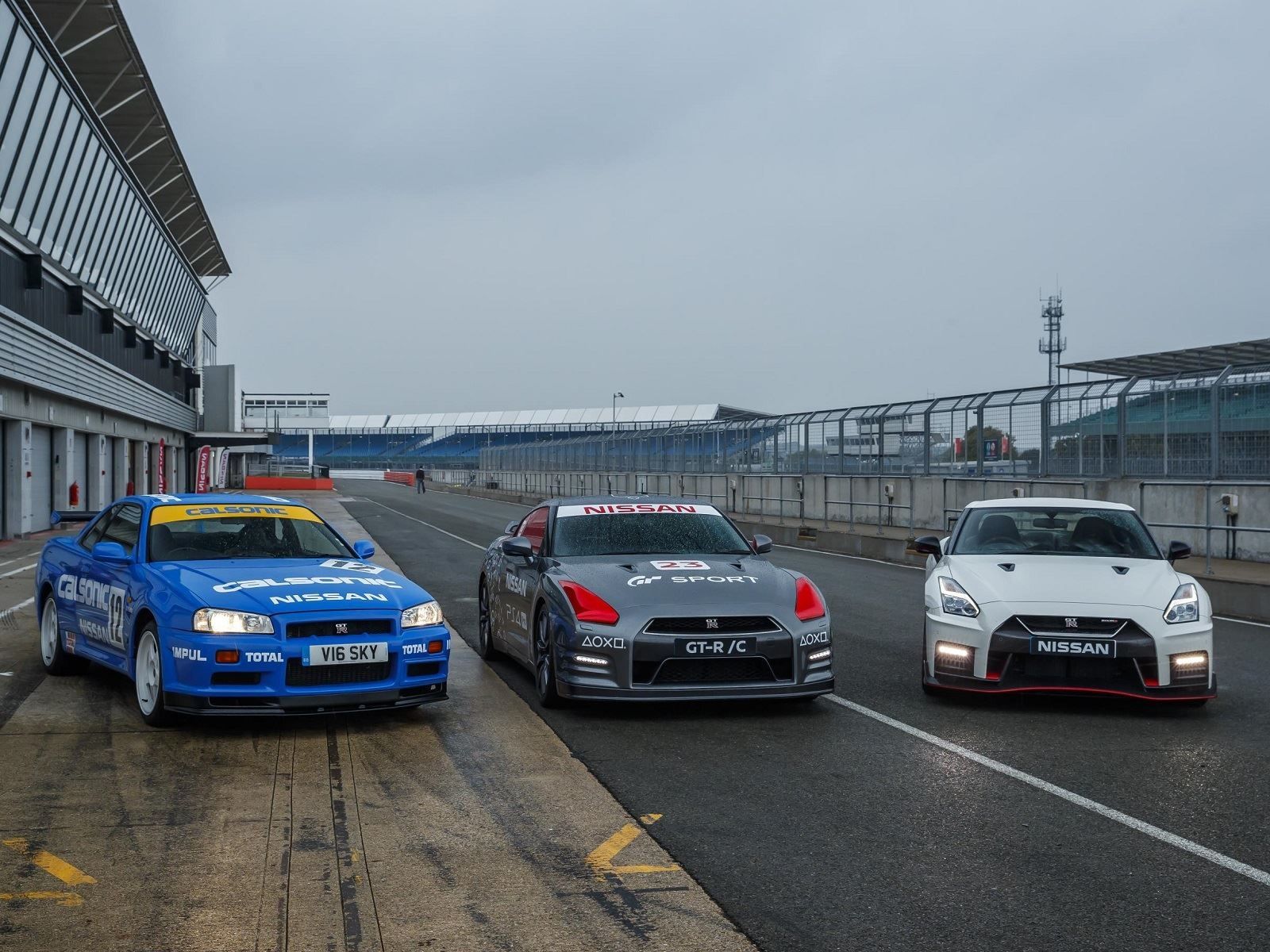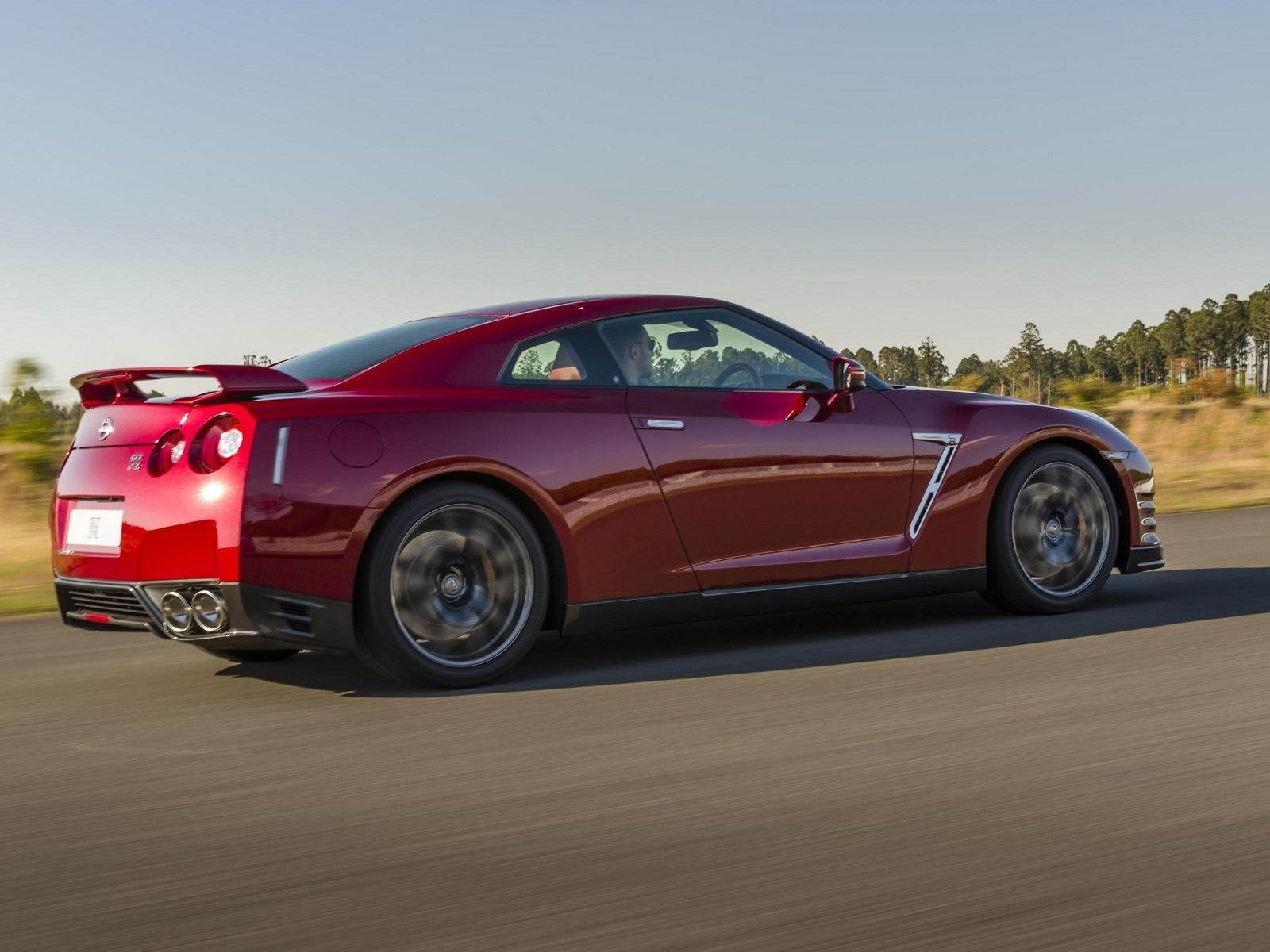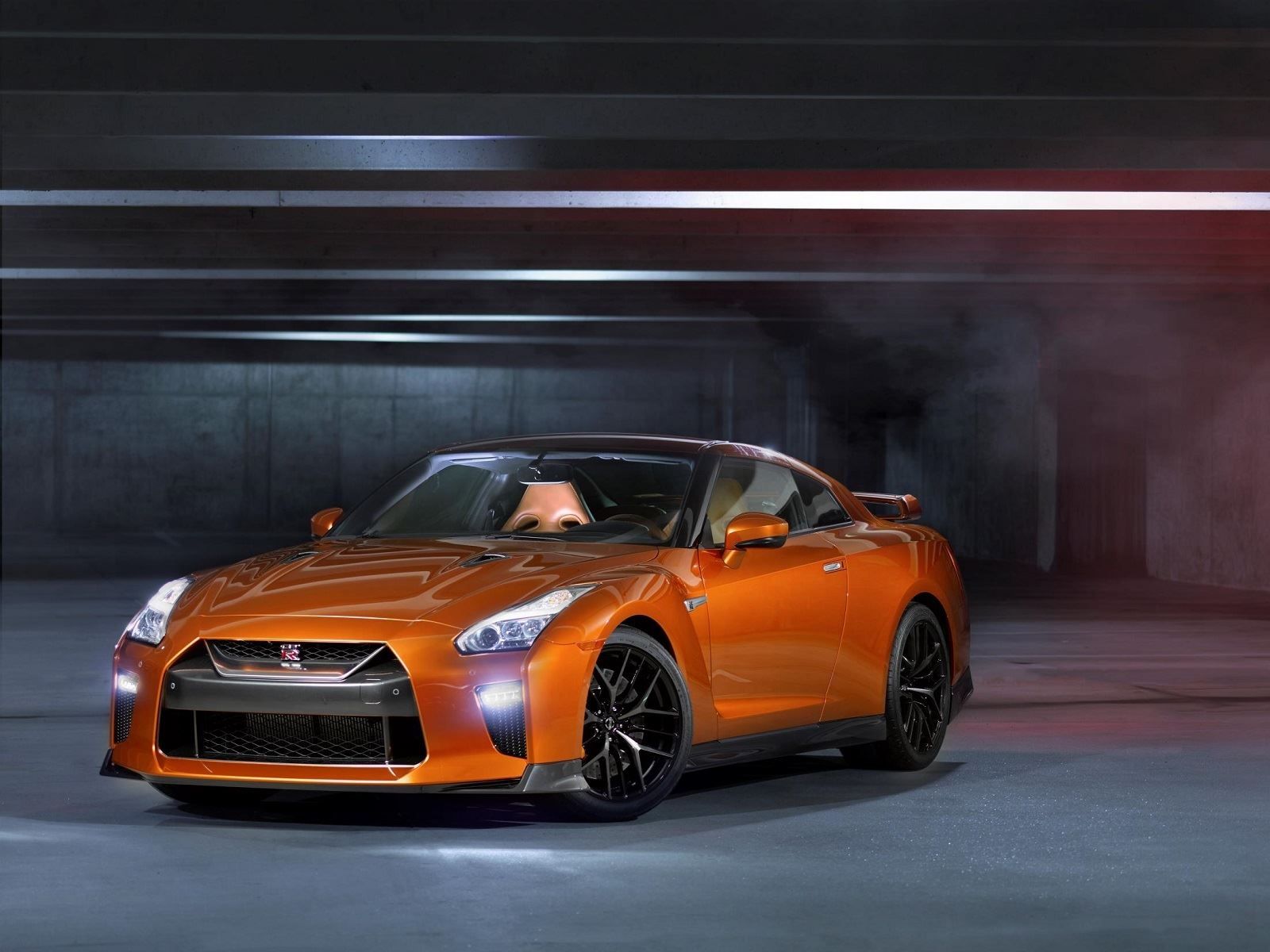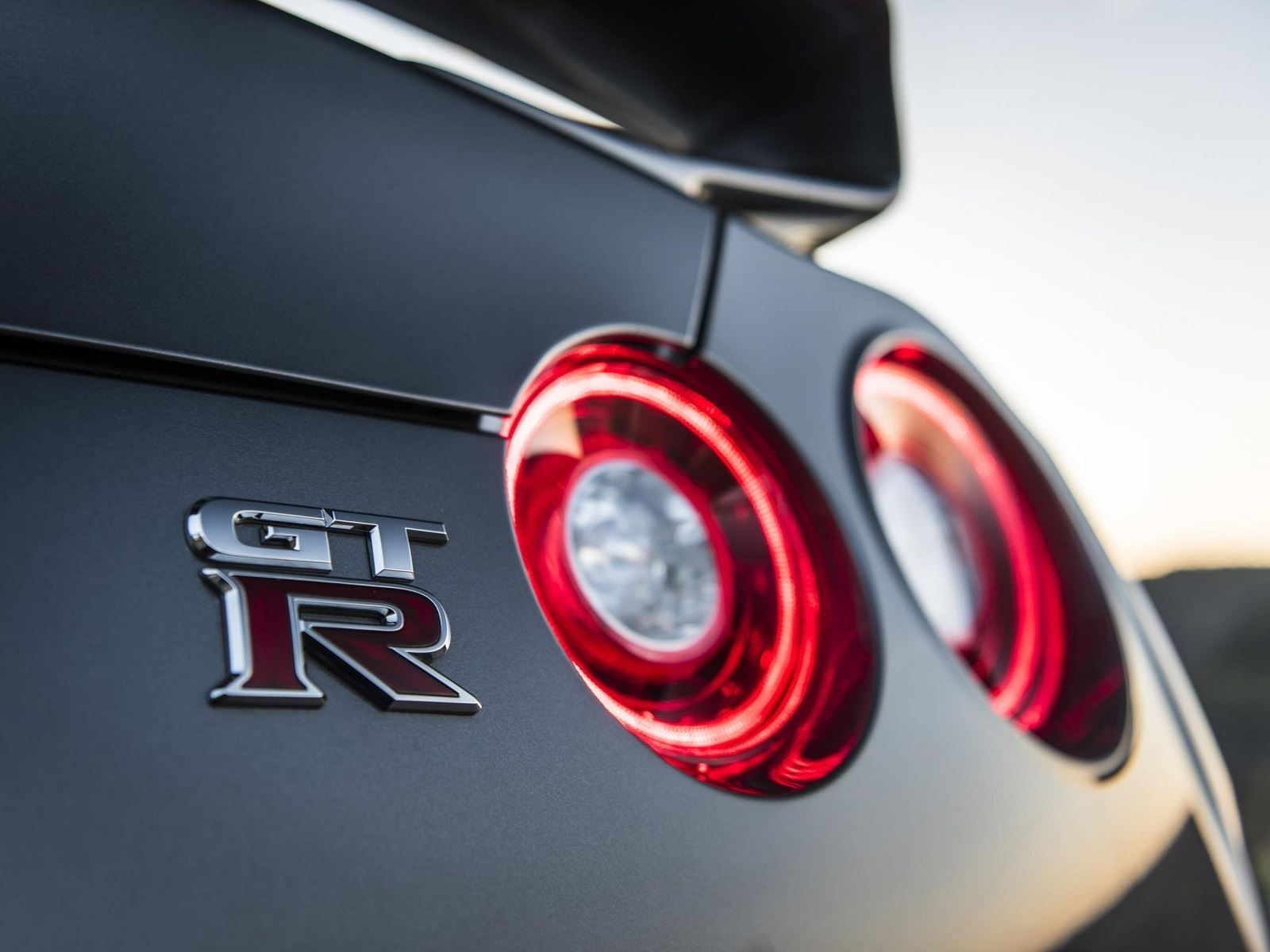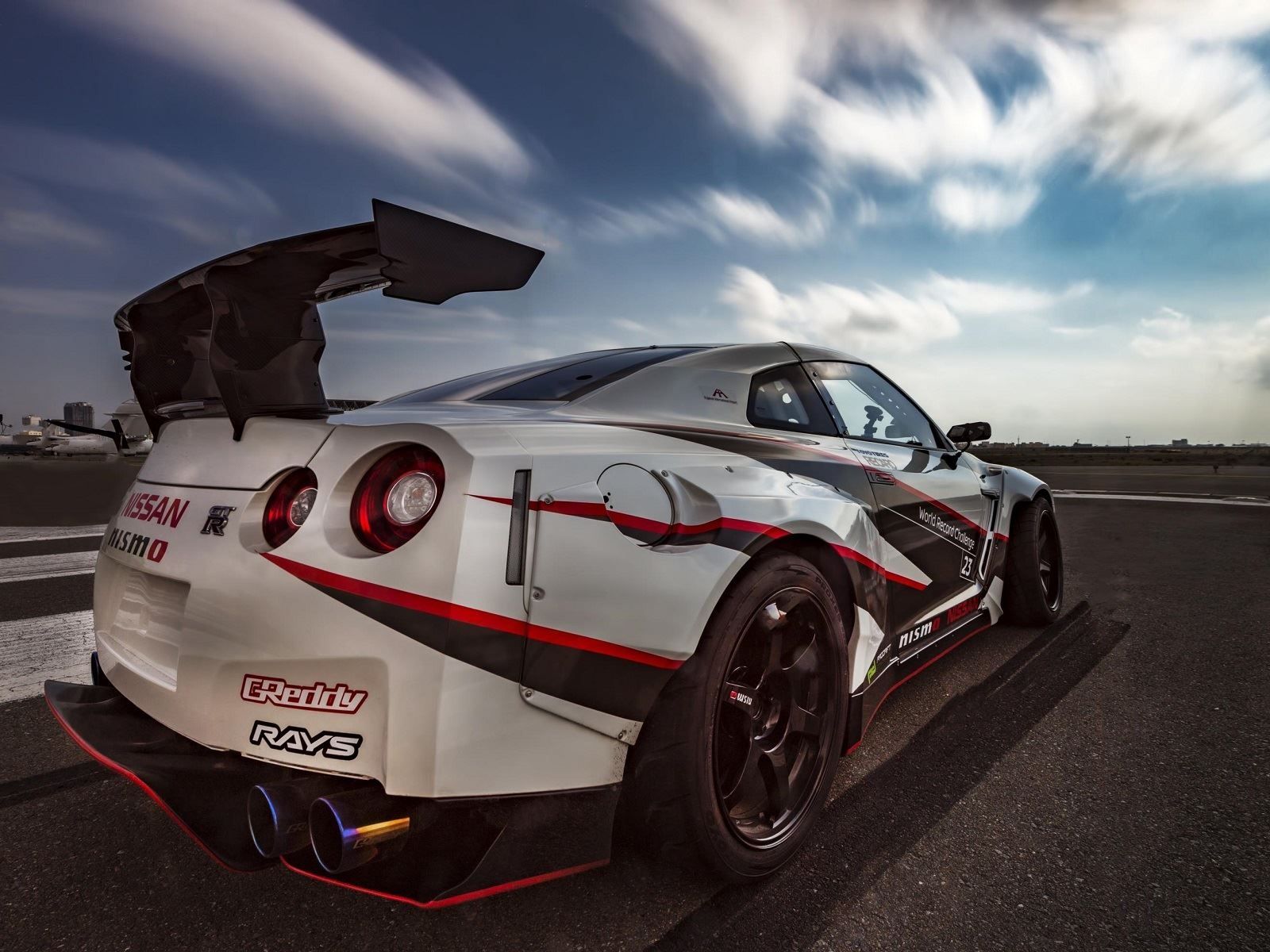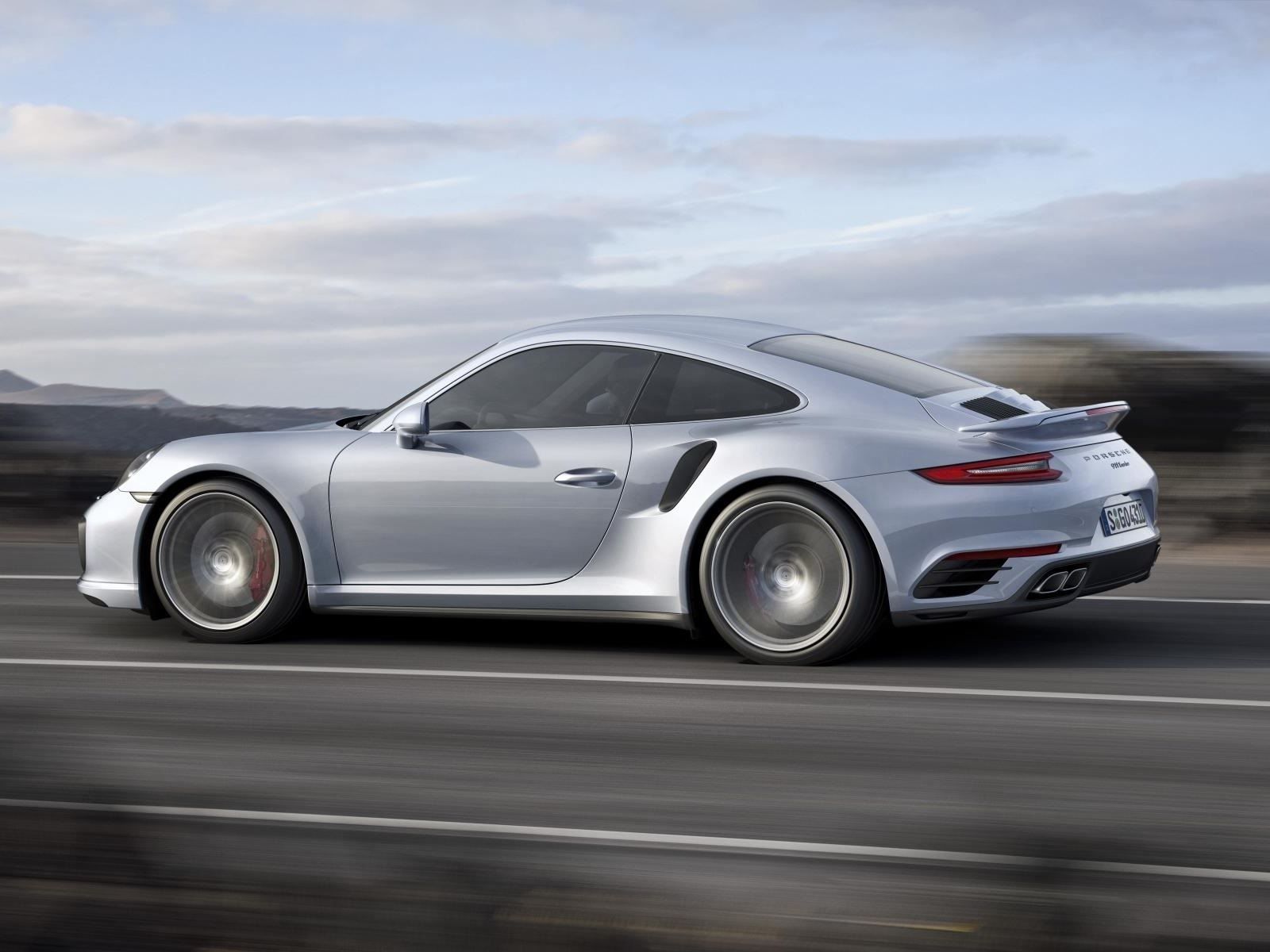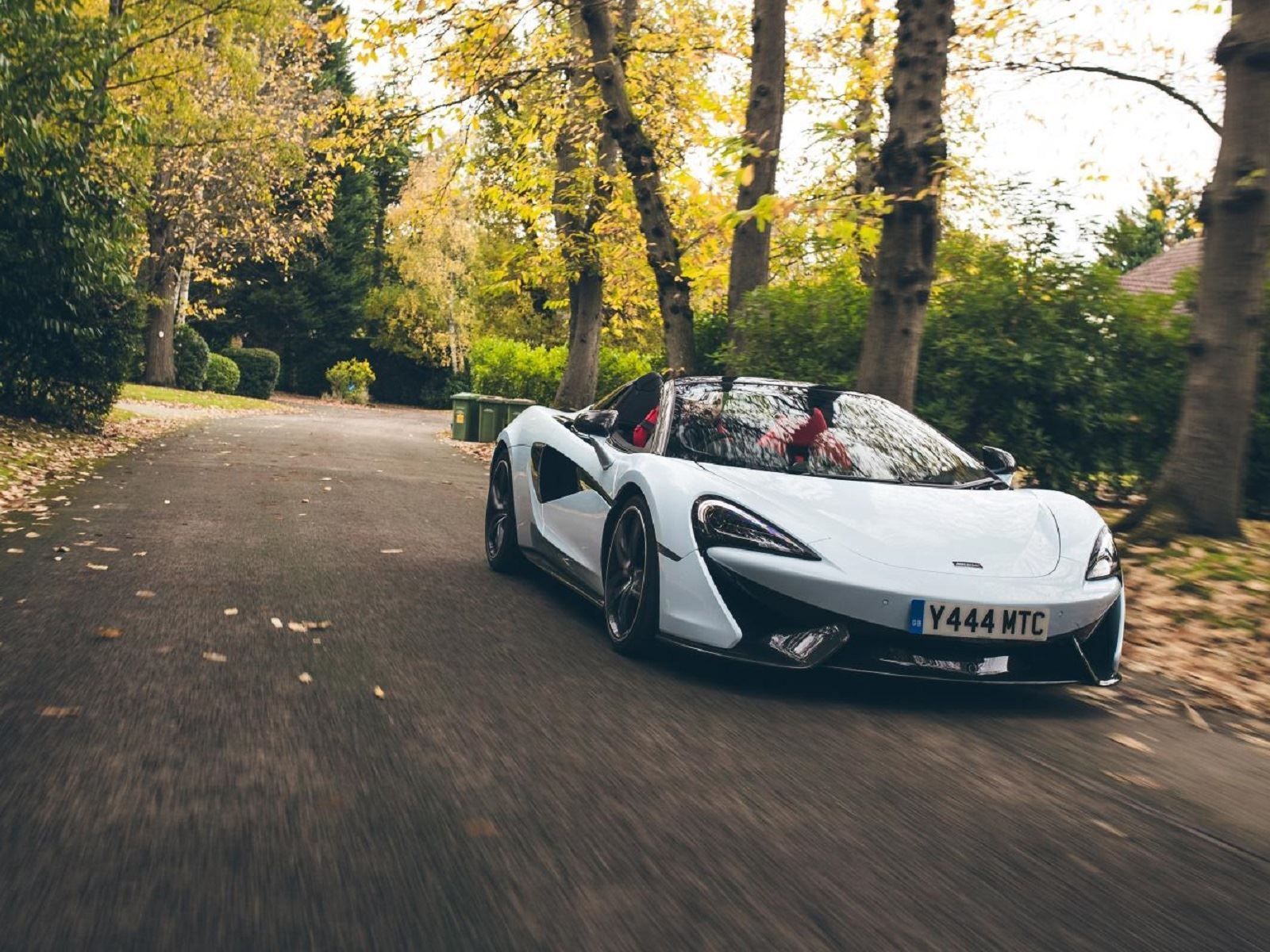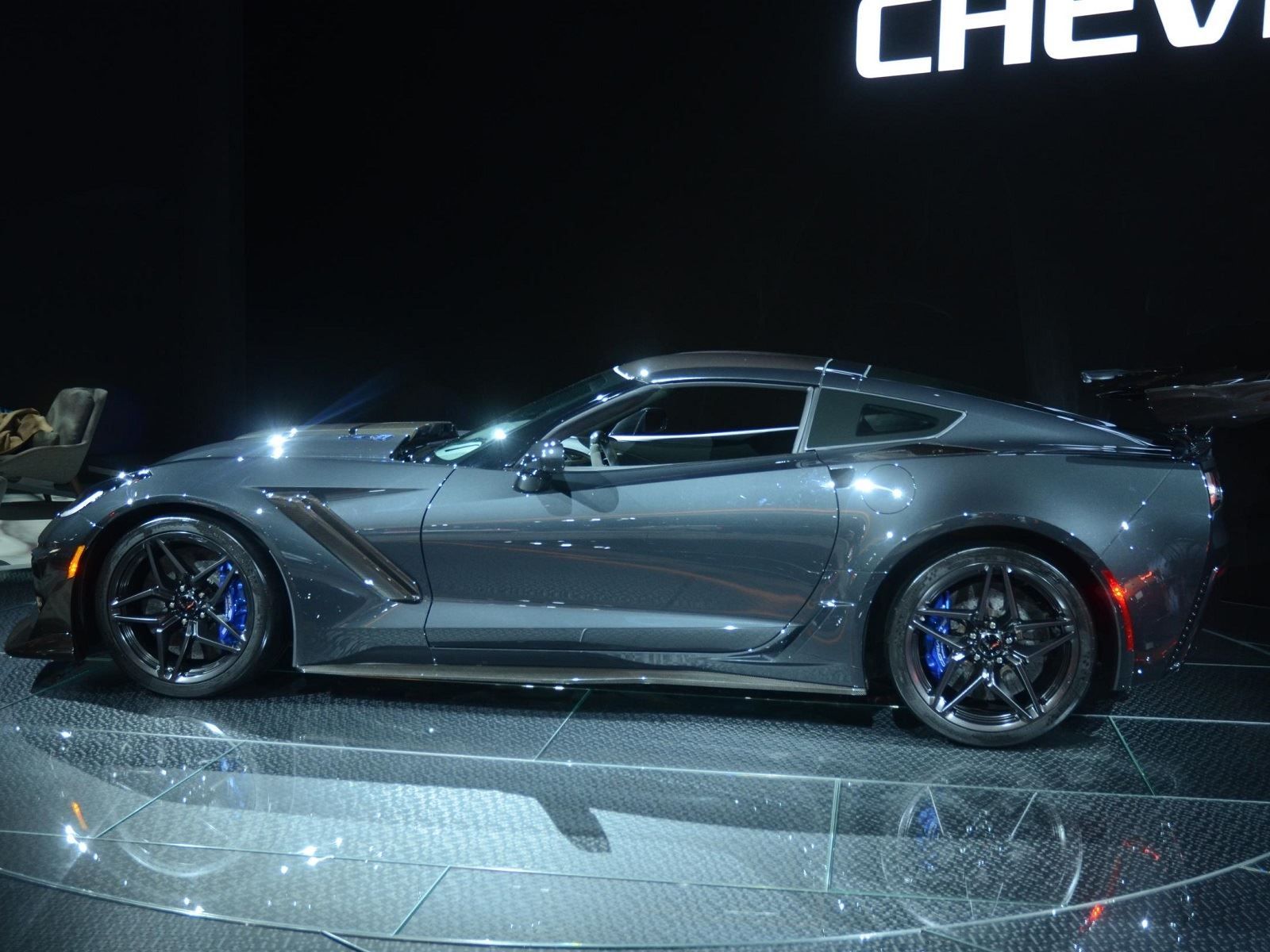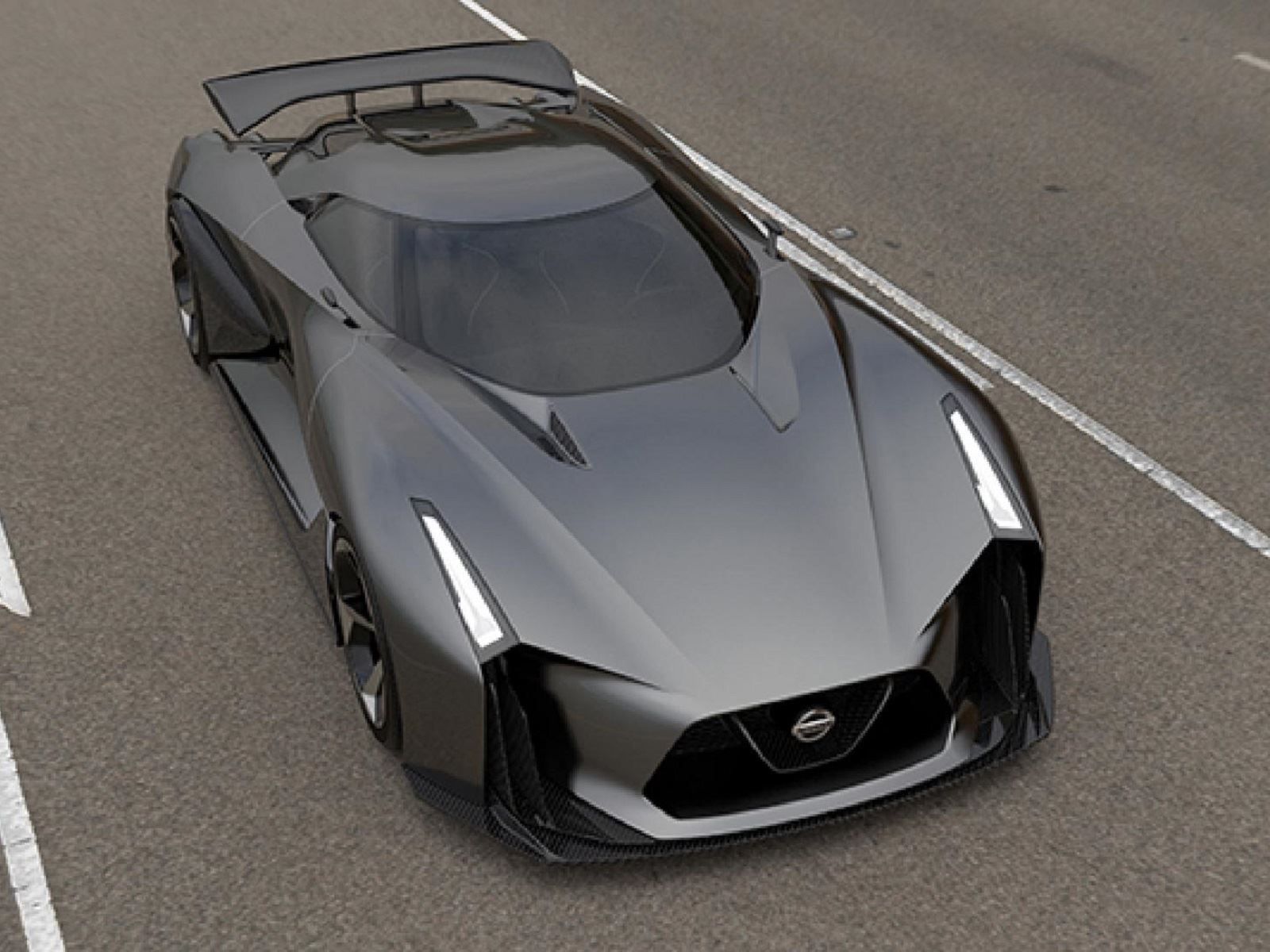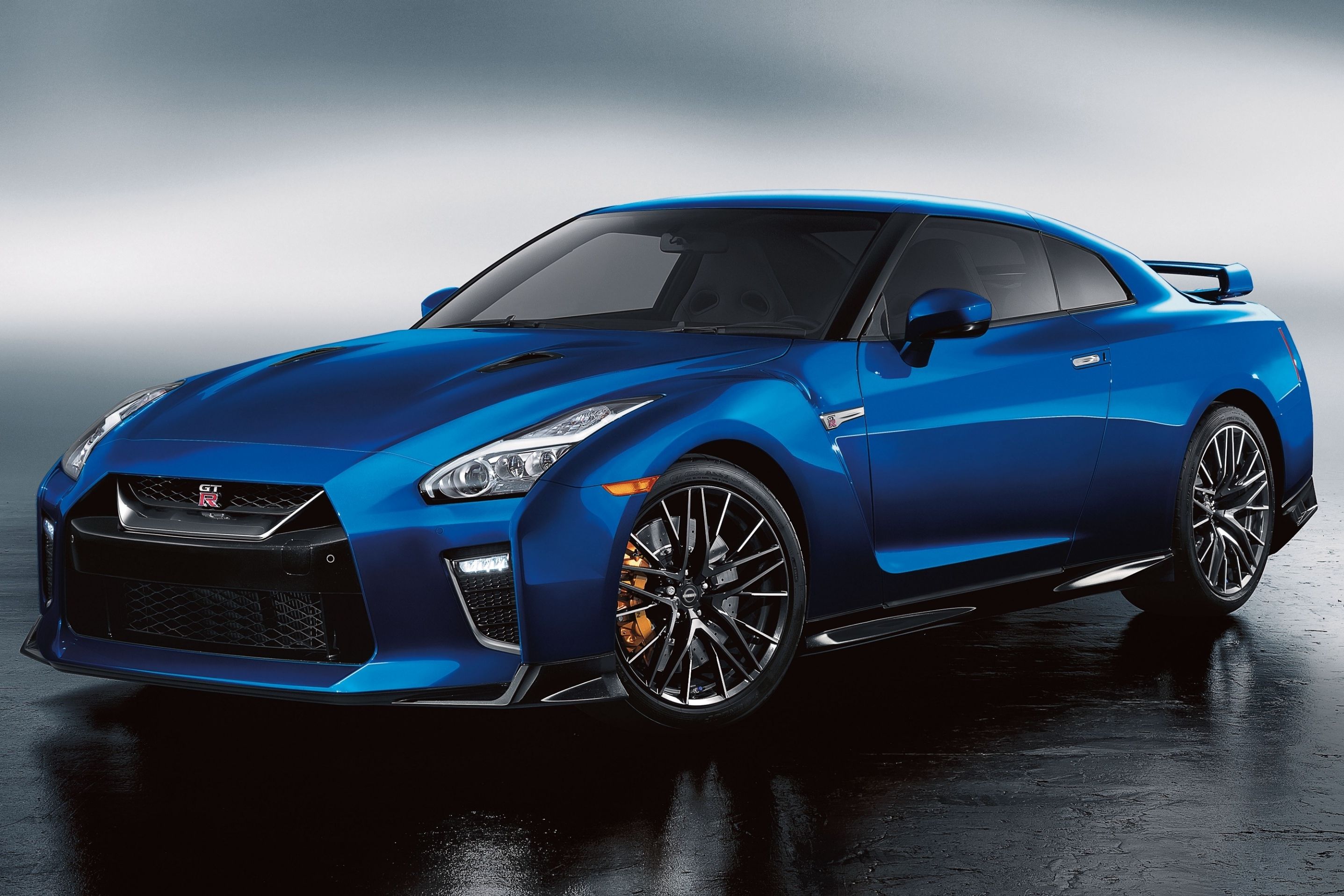
Nissan's GT-R performance brand has regularly produced vehicles that redefined what was considered technically possible in the sports car segment. The current GT-R is a case in point: it has been in production for over 10 years and is still bang on the pace. We embark on a short history lesson to see how it can manage this impressive feat. The original Skyline GT-R was introduced in 1969 and its 160-hp 2.0-liter motor gave it strong performance compared to contemporary offerings.
It was the third-generation 1989 Skyline GT-R R32 though that gave Nissan international recognition. Here was a technically advanced sports car with twin-turbos, a complex AWD system and track-honed chassis that could outrun a 911 at a fraction of its cost. The formula will be familiar to current GT-R fans as all subsequent generations have largely followed this setup. The GT-R 33 and 34 that followed continued their giant-slaying ways and the extremely robust mechanicals have made them the darlings of the aftermarket tuning community too. There are unlikely to be many unmodified GT-Rs left today thanks to the ease with which massive horsepower can be extracted from the RB26DETT inline-six engines.
The current GT-R arrived late in 2007, five years after production of the R34 ceased and it differs in a number of respects from its forebears. Firstly the Skyline name was dropped as was the manual transmission, to be replaced by a 6-speed dual-clutch automatic. Next, that iconic inline-six was replaced with a new 3.8-liter V6, still with twin turbos but power was now up to 480-hp. Despite a hefty curb weight approaching 4,000 lbs, the new GT-R soon proved itself to be not just a Porsche 911 competitor but capable of taking on and beating cars like the Ferrari F430 and Lamborghini Gallardo.
Fast forward to current day and those models from Porsche, Ferrari and Lamborghini have all been replaced, some more than once, yet the GT-R remains in production and is still competing successfully with this latest crop of supercars. This is thanks in part to the excellent base mechanical layout as well as the constant tinkering that has gone into the car from the moment the first version rolled off the production line. Most manufacturers tend to change a few components during a cars production life cycle and carry out a facelift which freshens up the exterior and generally comes with a more comprehensive mechanical update.
Nissan on the other hand opted to incrementally update the GT-R to keep it competitive and these detail changes have resulted in measurable improvements over the years. Power outputs have risen from that original 480-hp to 565-hp in the standard model while the top Nismo edition is now producing 600 hp. That aside, updates to the transmission, suspension geometry, chassis and countless software tweaks have evolved the 2018 GT-R into a much more capable machine than the original version was. A successful racing program has also helped hone the road car for track use. Externally, the styling is still sharp-looking although the interior, which wasn't particularly special to begin with, is really starting to show its age.
So, what about the GT-Rs competitors? At the current $100,000 base price in Pure trim the GT-R still offers massive bang-for-the-buck, but it is a fair bit more than the $70,000 you would pay for the base model in 2008. Still, inflation affects other sports cars too and there is not much around that will match it on the road. Thanks to the lighting-quick dual-clutch transmission and AWD traction, the GT-R launches to 60 mph in 2.8 seconds. The time has improved a few tenths over the years and the brutal launch is still as impressive as ever. The Track Edition is slightly more at $128,000 and the 600-hp Nismo trim is now a rather pricey $175,500. That puts it up against some fierce opposition.
To those competitors then, the Porsche Carrera 997 in 2008 was a very different car to the current 991.2 version. Huge changes inside and out have taken place and even the base models now come with turbocharging. This means much improved performance, but for 100K you will have to settle for the standard 370-hp Carrera which means a 0-60 mph time of 4.2 seconds. For another 30K the Carrera 4 GTS cuts that time to 3.4 seconds but you will have to spend almost $200,000 on the Turbo S before you find a 911 that will match a GT-R in a straight line.
A competitor that wasn't around 10 years ago is the Jaguar F-Type. It may not be as track-focused as the GT-R and fits just two people, but it offers serious performance and a lot of dynamic ability, especially in supercharged V8 form. You will need $100,000 for the 550-hp model and another 30K for the top 575-hp SVR trim. In a straight line neither can match the GT-R although the much higher interior quality and availability of a convertible model does target a slightly different performance car audience. Then there are the junior supercars like the twin-turbo 661-hp Ferrari 488 and 562-hp McLaren 570S.
The McLaren is around twice as much as a base GT-R while the Ferrari is over $250,000 before options. When it comes to exclusivity, looks and exotic interior styling the GT-R does not stand a chance. Compare acceleration and lap times though, and the 10-year-old sports car can still cut it with these exotics. In Nismo trim the price advantage does get eroded somewhat but the GT-R's performance on track is even more impressive. American sports cars have also come on hugely in recent years and the latest Corvette ZR1 is a very competitive $121,000 and with its massive supercharged 755-hp 6.2-liter V8 it matches the GT-R in a straight line despite only having rear-wheel-drive and it is seriously good on the track too.
Lower down the price range the 650-hp Z06 is also extremely impressive. Who would have thought that some of the most serious price/performance challengers would be American built? So, is the 10-year old GT-R still a viable alternative to the more modern opposition? In a word, yes. It still performs way beyond expectations and aside from its savage accelerative capabilities the dynamics are beyond reproach too as evidenced by its current 7:08 Nurburgring lap time. A time set back in 2013 by a Nismo model. The new GT-R is in development and rumors from within Nissan suggest that 2019 may be the year of its unveiling.
The front-engined 2+2 layout will remain but hybrid technology is pretty much confirmed for the new model. Until then, we have the impressively capable GT-R 35 to enjoy, a car that continues to defy its critics and set the standards in its segment.

